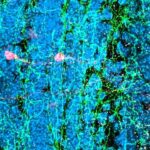Lien vers Pubmed [PMID] – 35513683
Lien vers HAL – pasteur-03888807
Lien DOI – 10.1038/s41598-022-10965-8
Sci Rep 2022 May; 12(1): 7364
Bipolar disorders are defined by recurrences of depressive and manic episodes. The pathophysiology is still unknown, and translating clinical symptoms into behaviors explorable in animal models is challenging. Animal models of bipolar disorder do not exist because cyclicity of the disease is impossible to mimic, and it is therefore necessary to study mania and depression models separately. Beyond mood, emotional biases differentiate bipolar states in humans. Mania is associated with positive biases, e.g. emotional stimuli become more rewarding and less aversive, and the opposite for depression. We propose to assess behavioral hedonic responses to innately appetitive and aversive olfactory and gustatory cues in mice as proxies for the assigned emotional valence. A mania model is therefore supposed to exhibit positive hedonic bias. Using the GBR 12909 mania model, we observed the classical hyperactivity phenotype, along with low depressive-like but high anxiety-like behaviors. Unexpectedly, GBR 12909-treated mice exhibited strong negative hedonic biases. Consequently, the GBR 12909 model of mania might not be appropriate for studying emotional disturbances associated with mania states. We propose olfactory and gustatory preference tests as crucial assessment for positive and negative valence biases, necessary for precisely characterizing animal models of bipolar disorders.


